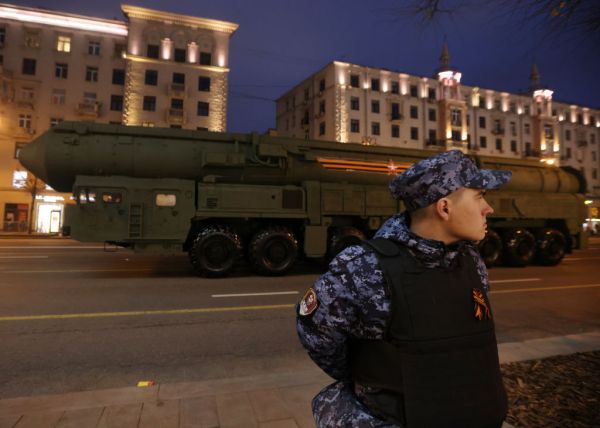COVID-19 cases in China are surging, but so is public sentiment against President Xi Jinping’s strict pandemic restrictions. The public-health consequences could be dire.
Following mass protests, Chinese officials this week ushered in a “new stage and mission” of China’s pandemic response. The government announced Wednesday that it was taking the first nationwide steps away from “zero-COVID,” which aimed to completely stop rather than mitigate the virus’ spread. The country’s goal now would be to “return to the state before the epidemic,” Chinese epidemiologist Liang Wannian said on state-run television, “but the realization of the goal must have conditions.”
The new approach scraps the negative test requirement for domestic travel and most public venues with the exception of schools, medical facilities, and nursing homes. It also allows individuals with asymptomatic or mild cases to isolate at home rather than quarantine facilities, reduces the length of required isolation for their close contacts, and puts limits on the time and scope of mass lockdowns for areas considered “high-risk.” Authorities previously could designate entire residential complexes, communities, and localities for lockdown.
Beijing’s decision to ease nationwide restrictions and similar local-level changes mark a partial victory for the thousands of demonstrators who took to China’s streets demanding an end to zero-COVID. The policy—which enjoyed relative public compliance for three years—used intrusive and disruptive practices like mobile tracking, regular testing, and forced centralized quarantine to limit COVID cases.
But China’s “zero-COVID” containment strategy may ultimately backfire. By imposing harsh restrictions until they became untenable and failing to prepare China’s health care system in the interim, Xi’s decisions have resulted in sparse natural immunity and low vaccination rates.
Lifting zero-COVID under current conditions could result in as many as 279 million cases and upwards of 2 million deaths in China, a recent study by health risk analysis firm Airfinity found. The assessment draws on data from this year’s COVID surge in Hong Kong, which experienced one of the highest mortality rates in the world after two years of a stringent lockdown policy. The immunity of mainland China today closely resembles that of Hong Kong nearly a year ago, and its healthcare system is even less equipped to deal with a spike in cases.
The draconian lockdown measures did stave off the sorts of surges seen in other countries. To date, China has only reported some 5,200 COVID deaths—though this is almost certainly a significant undercount. But it’s starting to look like zero-COVID merely delayed rather than prevented a major outbreak.
Chinese officials reported more than 71,000 new daily cases last Tuesday—the highest number since the pandemic’s start. Experts expect more waves of infections to come as China begins to dismantle its lockdown policy.
“They’ve kept infections incredibly low throughout the pandemic, so they have no naturally-induced immunity,” Dr. Matt Linley, analytics director at Airfinity, said in an interview.
Immunization rates in China are dismal, particularly among the elderly. Just 40 percent of people 80 and older have received booster shots, according to state media, and only about two-thirds are fully vaccinated. And many people who did receive the jab have waning immunity; it’s been nearly a year since Beijing’s last public push to get more people vaccinated. Taken together with the relative inefficacy of China’s domestically produced COVID vaccines compared with Western mRNA shots, these public policy failures mean that the population’s overall protection rate from the virus probably hovers near 5 percent.
While Beijing’s new COVID strategy aims to vaccine uptake among older people, health officials are up against the clock. The highly infectious Omicron BF.7, a subvariant of BA.5, recently became China’s dominant strain. “In terms of disease severity, it’s still very severe. And then in terms of transmissibility, it’s several times more transmissible than any variants we’ve previously seen,” Linley said. “The rate at which it can be transmitted is much, much greater than we saw earlier in the pandemic.”
China’s health care system isn’t prepared for the coming surge. Mainland China has about 3.6 critical care beds per 100,000 people—about half the ICU capacity of Hong Kong. The U.S. has about 29.4. The care hospitals can offer their patients will also be hamstrung by ventilator availability, oxygen supply, medical staff, among other considerations.
“Arguably China is currently in the worst possible position that it has been throughout the pandemic to reopen. … They will have significant waning immunity, and now there’s a more transmissible variant circulating,” Linley said. “Once hospitals reach capacity, particularly the critical care beds, then that’s when we’re going to start seeing deaths increase exponentially.”









Please note that we at The Dispatch hold ourselves, our work, and our commenters to a higher standard than other places on the internet. We welcome comments that foster genuine debate or discussion—including comments critical of us or our work—but responses that include ad hominem attacks on fellow Dispatch members or are intended to stoke fear and anger may be moderated.